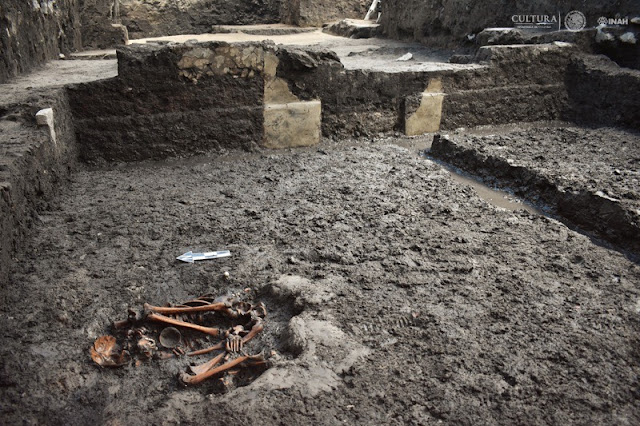Mexican archaeologists find dwelling for Aztec survivors of Spanish conquest
Archaeologists in Mexico said Monday they have unearthed what they believe was a dwelling where upper class Aztecs who resisted the Spanish conquest tried to preserve their customs and traditions.
 |
| Burial at the Aztec site of Colhuacatonco belonging to the time of Spanish contact [Credit: María de la Luz Escobedo, INAH] |
 |
| Human remains at the Aztec site of Colhuacatonco [Credit: María de la Luz Escobedo, INAH] |
 |
| INAH archaeologists located a sunken patio and a small ceremonial site [Credit: Meltón Tapia, INAH] |
 |
| Characters with western traits wearing hats [Credit: Meliton Tapia, INAH] |
 |
| Bird-shaped whistles made with the emerging technique of glazing [Credit: Meliton Tapia, INAH] |
Funeral offerings were found: a small figure of a coyote, a bracelet with shells, two small knives made of obsidian and ceramics from that era.
 |
| Figurine dating between 1325 to 1521 [Credit: Melitón Tapia, INAH] |
"What we detect in the materials is 'that which is Mexican,' the blending that began to take place after the Spanish conquest was complete," said Escobedo.
The rooms of the dwelling were built with stone, suggesting they were for important Aztec people and their relatives rather than common folk.
The most striking feature is a three meter by four meter (10 foot by 13 foot) area that was probably used for ceremonial acts.
Its polished and well-preserved floors have a design in the center, showing a circle with black spokes -- possibly a representation of a shield.
Source: AFP [July 05, 2017]



Comments
Post a Comment